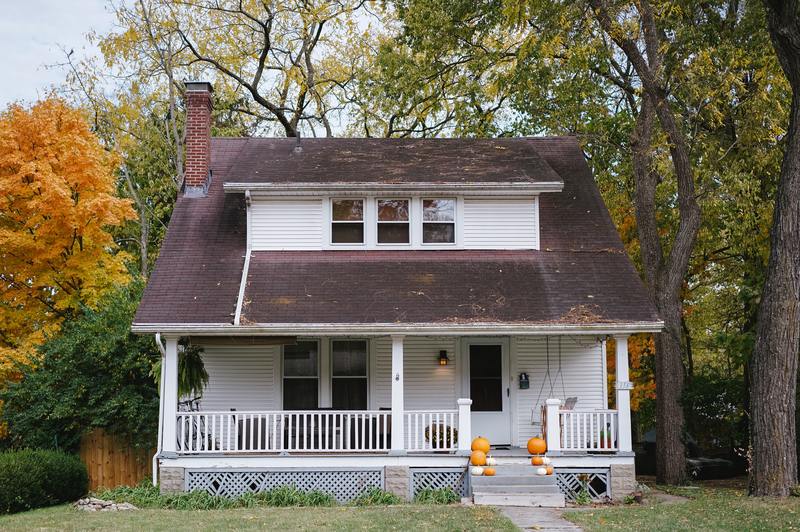Molds can sprout anywhere so outside of your house isn’t uncommon for their residence. So the question is, what causes mold on outside of house?
Molds are a type of fungus that likes to grow in a cool and damp place, indoors or outdoors. Molds require some specific conditions to start reproducing and spreading.

A food source, precisely an organic material, a place with moisture present, and minimal or lack of warm sunlight is what a mold colony needs to survive. Molds spread through the air using their spores to spread themselves. As long as these conditions are available, molds can definitely thrive.
Constant rainy days and gloomy weather is the season where molds tend to start growing. Your house siding which protects your home from the outside elements is one of the places where molds can proliferate. Getting too close to the landscape, some spots covered by shade and mainly on the northern side of the house’s siding is where you’ll probably start to see a mold colony thriving.
What Causes Outdoor Molds?
Outdoor molds are not uncommon to find, especially on rainy and gloomy days when the sun doesn’t shine. As long as the specific necessities are there, molds will eventually grow. So what really causes outdoor molds to grow?
1. Damp places
One of the necessities a mold needs is a place with saturated moisture, far from the reach of sunlight. Molds tend to grow in cool, damp areas where the water can sustain its growth, far from the spread of the sun. As a type of fungi, molds don’t photosynthesize and therefore have no need for sunlight; in fact, sunlight would kill the mold, along with its spores.
2. Organic material to feed on
Fungi, unlike plants that harness the sunlight to make sugar or starch, need an organic material to provide energy to sustain their growth and reproduction. That is why molds typically grow on materials which they can digest readily.
A mold colony can only grow in an inorganic material when organic material is stuck or attached to it. A growing vine or a leaking pipe outside your house can be a potential resource for mold growth.
3. Lack of sunlight
As mentioned, molds do not photosynthesize and aren’t reliant on sunlight for energy. A place where there is a shade or where sunlight doesn’t constantly shine is a suitable place for a mold colony to thrive.
Keeping mold away from your home comes down into knowing where they could possibly start. Here’s an article on how to detect water damaged wood, as a starter.
Can molds outside your home get inside?
Outdoor molds can definitely make their way inside. As mentioned before, molds travel by releasing spores in the air and spreading with contact. If an object comes in contact with a spore from outdoor molds and is placed in a damp enough place with something organic, that spore may start to grow into mold colonies.
The conditions needed for a mold colony to grow are mostly the same with every type of mold out there, may it be indoors or outdoors. It may be harmful whether it was from outside or inside your home. Molds can even get into your furniture, so here’s an article about how to treat water damaged cabinets to prevent molds from getting in them.
Can outdoor molds make you sick?
Outdoor molds can very much make you sick. Molds are known to cause health issues that usually come as allergies. Molds, especially food, produce toxic chemicals known as mycotoxins; these cause diseases and even death.
Molds are classified depending on health issues they can cause. The most dangerous ones are the toxic ones which were mentioned above, the ones that produce mycotoxins. These kinds of molds are to be avoided and especially ingested.
Another type of molds are allergenic molds. As the name implies, allergenic molds trigger allergic reactions such as runny noses and rash. It can even trigger allergies to the person without it if exposed for a long time.
The last ones are called pathogenic molds. These types of molds mainly cause economic damage, but they can still harm people. The ones susceptible to triggering sickness to this type of mold are those with weak or suppressed immune systems, such as infants and the elderly.
Conclusion
Knowing what causes mold outside of house can be beneficial to you as it can help you prepare for them both indoors and outdoors. Molds are a problem that every homeowner dislikes: an eyesore that also poses risk of getting sick with exposure.
To avoid having molds in the house exterior, you must carefully and regularly check for the places where molds can proliferate. A shrub or vine growing near your walls, a siding made of porous material such as wood, an incorrectly placed sprinkling system, and even a wall with constant rainwater exposure can be good for molds to settle. You must remember that outside molds don’t always stay outside, so it would be best for you to remain vigilant.
Molds typically have simple growth anatomy that is very much the same for every other type. Deprive it of one, and it can mostly stunt its growth and keep the pesky colony from disturbing you and your family.
